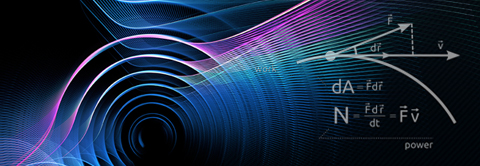----------------------------------------------------------------------------------------
Title : In Vivo Fluorescence Laser-Scanning Endomicroscopy for Biomedical Research
Abstract:
Small animal, particularly mouse, has been an important test bed for basic and translational biomedical study preceding clinical application. Recent advances in genomic technology have allowed a creation of animal model for human disease with genetically encoded biomarker, notably green fluorescent protein (GFP) awarded Nobel Prize at 2008. Combined with a rapid development of fluorescent probes, including newly emerging nano-material, and mature molecular biology tools, it has opened up new avenue to the observation of complex pathophysiology of human disease in animal model with much greater detail at cellular and molecular level in high contrast and specificity. Accordingly, novel fluorescence imaging methods that can visualize anatomical structure with functional and molecular information provided by fluorescent probes in animal model in vivo have drawn great attentions. While all of major clinical imaging modality such as ultrasound, CT, MRI and PET has been modified and adapted, optical imaging technologies, especially laser scanning confocal and multiphoton fluorescence microscopy, are the only one readily providing cellular resolution of sub-micrometer in live animal. Over the recent years, these technologies enabled dynamic 3D view of the living specimen as various biological processes unfold in real-time to provide unprecedented insights those were impossible to obtain by traditional static 2D snapshots (i.e. histopathology). With the development of highly specific targeting agents and new endogenous contrast, potentially enabled by nano-technology, these new imaging methods have advanced beyond conventional ex vivo thin tissue sections or in vitro cell cultures in Petri dish to in vivo animal. It can allow direct visualization of gene expression, regulation, protein activity, drug delivery, cell trafficking, cell interaction, physiological response under external stimuli in their natural microenvironment in vivo. Various dynamic processes such as cell trafficking, cell-cell or cell-microenvironment interaction, protein and gene expression can now be monitored in live animal, which provides new insights unobtainable by conventional ex vivo and in-vitro study. However, for in-vivo imaging of many viscera and thoracic organs deeply placed inside animal, application of these techniques has been challenging because of limited imaging depth up to 500 mm.
In this presentation, the recent development of endoscopic method to conduct these in-vivo microscopy techniques in minimally invasive way to visualize deep internal organ and tissue in small animal will be introduced. Fabrication of 1mm diameter miniature gradient index lens-based endomicroscope and its integration to home-built video-rate confocal / multi-photon microscopy system will be presented. Its application to various basic and translational biomedical studies through wide-area cellular imaging of internal organ will be demonstrated1. Specifically, the longitudinal visualization result of immune cell trafficking from the graft to host and vice versa after transplantation in mouse model will be presented. And recent efforts on the visualization of early tumorigenesis of orthotopic spontaneous colorectal cancer mouse model will be presented. Not only for basic biomedical research, this live animal imaging system can serve as a platform for translational research to monitor efficacy of various preclinical therapy, which can greatly expedite clinical translation. With proper engineering and further development of technology, it can evolve to a novel diagnostic tool in certain areas of everyday human clinic with new nano-engineered materials.
1. Kim, P et. al. “In vivo wide-area cellular imaging by side-view endomicroscopy,” Nature Methods, 2010. 7(4), pp. 303-305
나노과학기술대학원 책임교수 신중훈 배상.







